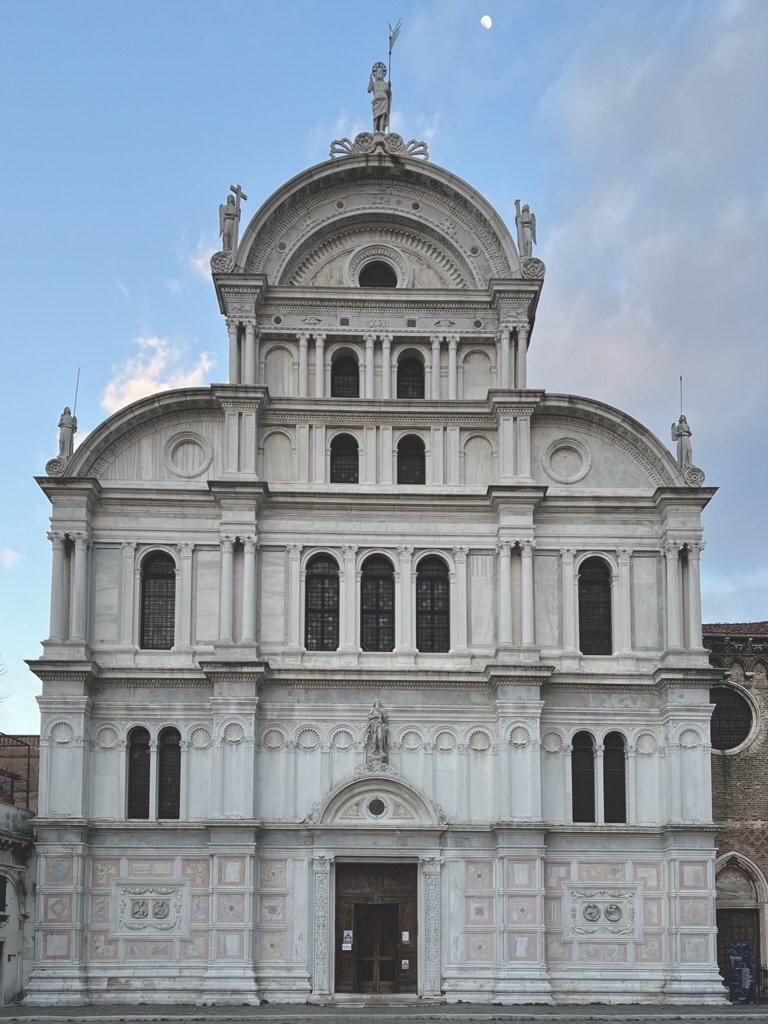San Zaccaria
San Zaccaria, on the evening of 2 March 2023
The beautifully proportioned facade of San Zaccaria combines grandeur with great delicacy, the unity of its design being all the more remarkable because it is the work of two architects, in two different styles.
The lower part is by Antonio Gambello, who died in 1481, when only the lower order and possibly the second had been built. Mauro Codussi then took over in 1483 and completed the work. I’d always thought of this as an early renaissance church, and I must confess that I hadn’t appreciated, before reading Richard Goy’s guide, that the lower part is in fact gothic, so seamless is the transition to the early renaissance above.
The top of the church, with its semicircular pediment over the central bay, and quadrants over the side bays, is reminiscent of Codussi’s earlier church of San Michele in Isola, which unlike San Zaccaria, is early renaissance all the way through:
San Michele in Isola. Mauro Codussi , completed 1469
San Zaccaria also has similarities with the Scuola Grande di San Marco in Campo San Giovanni e Paolo, now the Ospedale Civile. This building was also started by different architects, Pietro Lombardo and Giovanni Buora. They were dismissed after a disagreement with the clients, and replaced by Codussi who then completed the upper part of the facade.
Former Scuola Grande di San Marco, now the Ospedale Civile. Completed by Codussi around 1495
Below are some pictures of the interior of San Zaccaria which I took during a visit the previous October, when I finally managed to get inside. The painting in the architectural frame is Giovanni Bellini’s Virgin and Child with four Saints. This late work, painted when the artist was 74 years old around 1505, is probably the greatest of his works which can be seen in the place for which it was actually painted. It was looted by Napoleon and taken to Paris, where it was transferred from the original wood panel to canvas, to which is attributed it’s current good state of preservation. The technique of transferring oil paintings from wood panel to canvas sounds pretty scary, involving scraping or dissolving the wood until only a thin layer of colour remains, before transferring the paint layer on to canvas. It’s something people did as far back as the early 18th century, which has now been replaced by modern methods of wood conservation. In 1817, after the defeat of Napoleon, and after 20 years in Paris the painting was returned to Venice. So I suppose this is one instance where Napoleon, reviled Venice for his vandalism and plundering, seems to have done something which eventually resulted in a good outcome.








